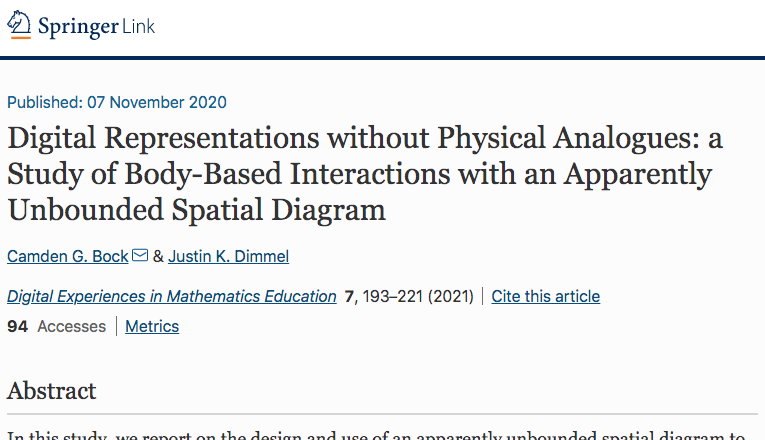
Digital Representations Study by MST Graduate Research Assistant and RiSE Faculty Published
A study article by Master of Science in Teaching graduate research assistant Camden Bock and RiSE Center faculty Justin Dimmel was recently published in Digital Experiences in Mathematics Education.
Digital Representations without Physical Analogues: a Study of Body-Based Interactions with an Apparently Unbounded Spatial Diagram (link to article)
Abstract:
In this study, we report on the design and use of an apparently unbounded spatial diagram to explore shearing, an area-preserving transformation. Apparently unbounded spatial diagrams are realizations of geometric objects, such as lines, that appear to extend indefinitely. They can be rendered in virtual reality displays where users who are visually immersed in a virtual world can interact with them through natural body movements (e.g. walking, grasping, head-turning). We developed an immersive environment that contained a dynamic spatial diagram of a triangle whose vertices were points on two apparently unbounded parallel lines. The diagram offered orthogonal and non-orthogonal perspectives on the parallel lines, mediated by walking and head-turning. Pairs of learners engaged in open-ended inquiry with the diagram. We analyzed their interactions with it and each other to distill mathematical arguments. The participants relied upon spatiographic observations of the diagram, as they might rely upon such observations of large-scale objects (e.g. buildings), in order to make arguments about how shearing affected the triangle. We discuss how natural bodily interactions with large-scale spatial diagrams can create new opportunities for learning and teaching.
